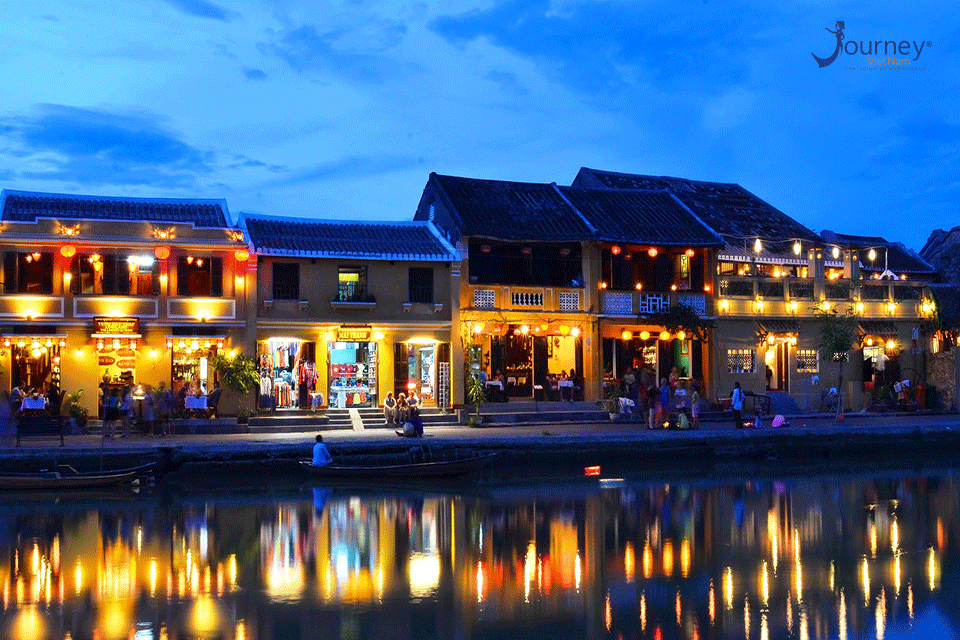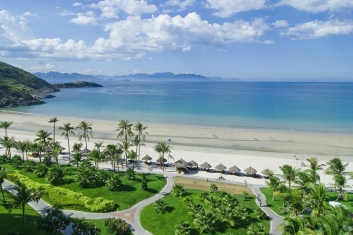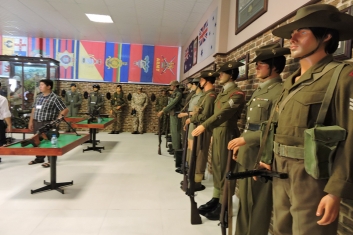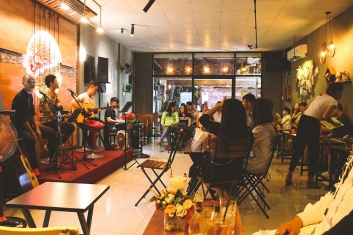![]() Vietnam Travel Guide
Vietnam Travel Guide
Travel Guide To Hoi An (Part 2)
Coming to Hoi An, do not miss these destinations!

Chua Cau – Bridge-Pagoda Hoi An:
Chua Cau Hoi An (also known as Japanese Bridge) is a national cultural and historical monument and is chosen as the symbol of Hoi An city. The temple is located on a small bridge, crossing the romantic Hoai River. It is the only one of its work originating in Japan, built by Japanese merchants since the 17th century, so it is also known as the Japanese Bridge. However, the bridge still bearing the bold architecture of Vietnam. Both the temple and the bridge are very elaborately carved, the roof is covered with yin-yang tile, the temple looks toward the river. The heads of the bridge are decorated with wooden statues, one bridgehead is a dog statue, and the other is a monkey statue standing.
Lantern Street:
Lantern seems to have become familiar to anyone who has ever visited Hoi An. On every occasion of the lantern festival, usually in the spring, visitors on Hoi An Eco Tour can book hotels near Hoi An Old Quarter to see the bustling streets welcoming Tet, the whole neighborhood become brilliant as wearing the new colorful clothes. Each porch, shop, public place is decorated with lanterns of all colors and sizes. Come to Hoi An tourism these days, visitors on Tours in Vietnam feel like “getting lost” in a land of fairy, a magical and sparkling “moon” kingdom.
Duy Xuyen silk village:
At 28 Nguyen Tat Thanh Street, Hoi An city, the Silk Village is re-imagined with the purpose of revitalizing ancient space and promoting the miniature image of the large trading port more than 300 years ago. It is a place that contributed to creating a famous silk road of Vietnam on the sea. With special ingredients that can not be found elsewhere, the village has produced many unique and beautiful products. Visit this ancient silk village, visitors not only admire the process of creating silk but also experience this process with artisans.
Tra Que Vegetable Village:
Tra Que is known as a famous brand for a long time because many vegetable products with a specific flavor are grown on rich soil fertilized by algae from the river. This village is only 2 km north of Hoi An Ancient Town, between the De Vong River and Tra Que algae Lake, Hoi An. Ever year on the 7th of the first lunar month, the festival is often held here in the air jubilantly with the desire for good weather and bumper harvests. Tra Que Vegetable Village has become an attractive tourist destination for those who want to learn and experience life as farmers.
Cu Lao Cham:
Cham island is about 15 km from Cua Dai beach, belonging to Tan Hiep commune, Hoi An city, Quang Nam province. This is an island group recognized as a biosphere reserve in the world, including 8 islands: Hon Lao, Hon Dai, Hon Kho Me, Hon Kho Con, Hon La, Hon Tai, Hon Ong. With a cool year-round climate, rich flora and fauna, especially rich seafood and Edible bird’s nests and coral resources, Cu Lao Cham becomes a great tourist destination for those who love the natural beauty of the sea beside moments immersed in the ancient peace of Hoi An. You can rent a hotel near the Cu Lao Cham pier for your convenience in travel and sightseeing.
Cua Dai Beach:
Located 4km east of Hoi An town, Cua Dai attracts visitors with smooth stretching sand, the blue sea, waves sparkling in the bright yellow sunshine. This is one of the most beautiful beaches in Asia, become a Best destination in Vietnam.
Handicraft workshop:
This is the place to create countless sophisticated items that most visitors come here want to buy as a souvenir. Hoi An has many kinds of handicrafts such as weaved mats, weaved fabrics, pottery, lacquer pictures, etc. Visit the workshop, tourists can witness the skillful and meticulous hands of artisans creating fine products and visit a few stages in the process.
For more information/details: Halong Bay Cruises, Halong Bay Day Tour, Halong Bay one Day Trip, Hanoi City Tour, Vietnam package Tours, Hoa Lu Tam Coc 1 Day Tour, Hue City Tour, Sapa Vietnam
Copyright © 2016 Journey Vietnam.









